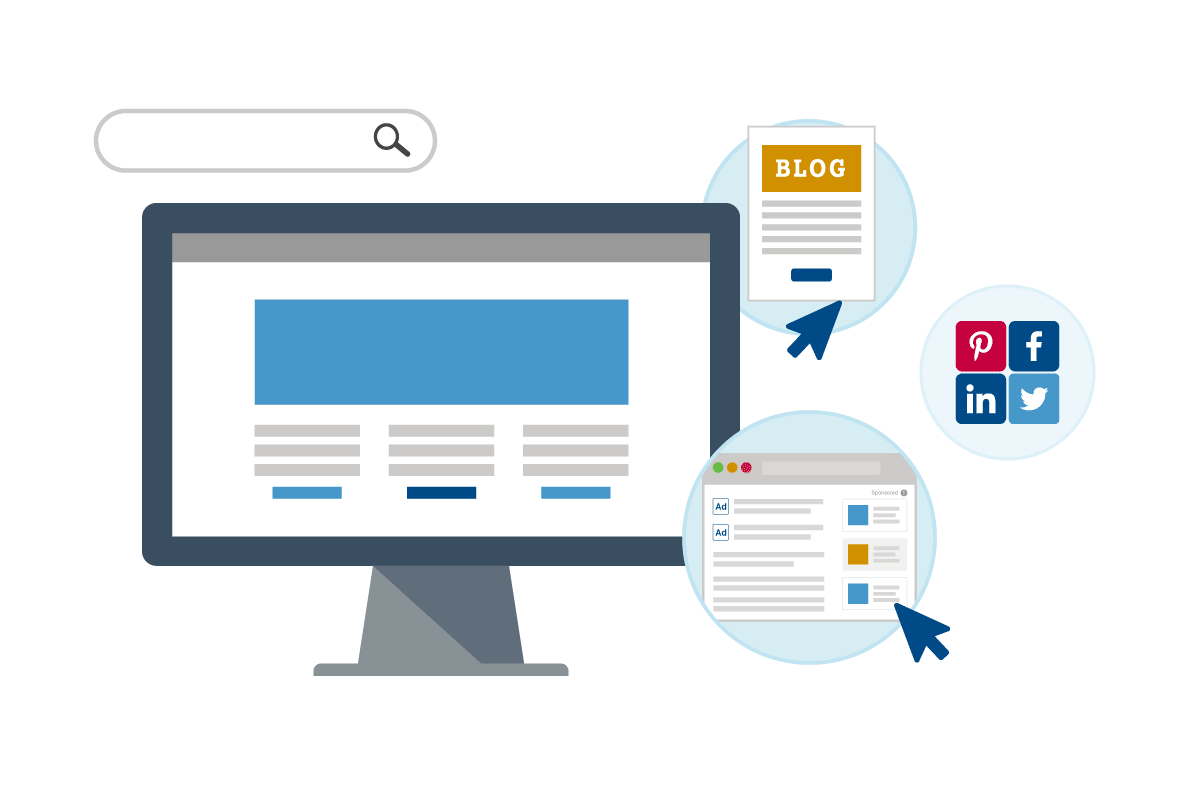5 Things You Need to Do Immediately After a Website Launch
posted on

Your new website is live … now what? Launching a new website is a huge achievement that can do wonders for your business—it can establish an engaging brand identity, improve credibility, create a positive perception of your business, and slingshot you ahead of your competition. But while a new website is a significant milestone, it’s not the end of your marketing journey.
Once you have a new website you need to find ways to attract people to it, because no matter how great your website is, if no one sees it, it can’t help your business.
Here’s what you need to put on your marketing to-do list as soon as your new website is up and running.
Start Developing Fresh Content
Having high-quality, frequently updated content on your website—whether with a company blog, news releases, events, or on-page content—can boost your Google rank, help generate inbound traffic to your website, demonstrate thought leadership and authority in your industry, generate leads and drive conversions, and give your company a strong, unique voice.
Start with a content audit to take a comprehensive inventory of what content you have, determine what content needs to be updated, and identify opportunities for new content to be created.
Next, develop a content strategy based on your business goals, then start creating content that delivers an excellent user experience.
More information on developing high-quality website content:
Establish a Strong Social Media Presence
Social media can be an excellent tool for connecting with your customers and driving them back to your website, and now that you have a website you can be proud of, it’s time to step up your efforts.
First, do a full social media audit to give you a comprehensive overview of all your social media marketing efforts to date. Look at which social media platforms have been the most successful in terms of engagement and conversions, and for each channel determine how many followers you have, how often you have been publishing, what types of social posts you have used, and which posts have been the most popular with your followers.
Next, take a look at the demographics and interests of your customer base, target audience, and buyer personas, and use that information, combined with the results of your social media audit, to decide which social media platforms your business should be on.
Once you have chosen the social media platforms that are most closely aligned to your business goals, create a publishing schedule and editorial calendar and start creating social posts that embody your brand image and engage your followers.
More information on social media marketing for your business:
Consider Digital Advertising
Getting people to come to your website through organic search and social media traffic can be difficult, but there is a shortcut—digital advertising.
In fact, digital advertising—such as pay per click (PPC) ads, display ads, and social media advertising—has become so successful that businesses now spend more on digital advertising than they do on TV, print, and radio ads combined.
Before you start using any type of digital advertising, you need to establish what your goals are. Are you looking for brand awareness? Immediate sales? Lead generation? An increased social media following? The answer will dictate which type of digital advertising to use.
If you’re using a call to action in your ads, be sure to create a compelling landing page to get potential customers to take the desired action.
More information on digital advertising for your business:
Use Email to Connect with Your Customers
Almost everyone uses email, which makes it one of the best ways for businesses to reach customers.
Not only does email have a huge user base (there are 3.9 billion email users worldwide, almost twice the number of users on any one social media channel), it is easy and affordable to use and offers an excellent return on investment.
If you don’t already have a strong collection of customer emails, start by building your email list. Once you have a robust list of valid email addresses belonging to people who have indicated an interest in your brand, determine which types of emails you want to send.
Options include welcome emails to introduce yourself to new customers, an email newsletter to tell customers what’s new with your brand, offer emails to give customers exclusive discounts or special deals, and emails that aim to deepen the relationship with your customers by asking them to take a survey, post a review, or provide a testimonial for your website.
When you’re sending emails, make sure you are using a compelling subject line that will make customers want to open the email, and determine the appropriate sending frequency for your emails so you stay top-of-mind with customers without overwhelming them.
More information on using email to market your business:
Optimize for All Types of Search
Optimizing your website to make it more easily found by search engines used to mean coming up with a list of relevant keywords and sprinkling them liberally throughout your website content. These days, it’s a lot more complicated.
People are using new ways to search, and search engines have gotten a lot better at understanding what searchers are looking for (search intent), then delivering search results that give them the answers they seek.
To make sure your website content appears as a high ranking search result for all types of search, make sure you optimize your website content for local search, image search, and voice search.